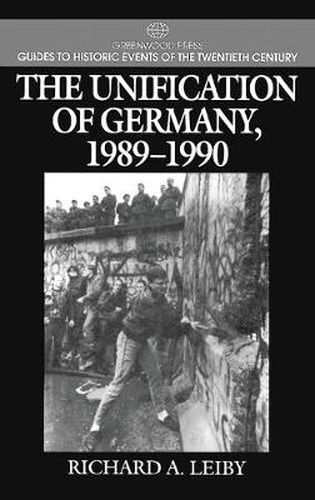Readings Newsletter
Become a Readings Member to make your shopping experience even easier.
Sign in or sign up for free!
You’re not far away from qualifying for FREE standard shipping within Australia
You’ve qualified for FREE standard shipping within Australia
The cart is loading…






When the Berlin Wall fell, so did the East German communist regime. Then began the complex task of creating a single German state. This work, the first book-length examination of the revolution and unification, is a readable and informative narrative written for high school and college students and the general public. A series of essays presents the social and political forces that shaped the 1989 revolution and the political decisions of both Eastern and Western Germans in the nine hectic months before unification in 1990. Following a timeline of events, a narrative historical overview places the revolution in the context of post-World War II German history. Other topical essays address the effect of mass emigration from East to West Germany, the role of the Protestant clergy in the revolution, foreign reactions to the revolution, the drive to unification and an assessment of the future of a united Germany and its position in the European community. Ready-reference features include biographical essays on key individuals, the text of key primary documents relating to the revolution and unification, a glossary of terms and an annotated bibliography.
$9.00 standard shipping within Australia
FREE standard shipping within Australia for orders over $100.00
Express & International shipping calculated at checkout
Stock availability can be subject to change without notice. We recommend calling the shop or contacting our online team to check availability of low stock items. Please see our Shopping Online page for more details.
When the Berlin Wall fell, so did the East German communist regime. Then began the complex task of creating a single German state. This work, the first book-length examination of the revolution and unification, is a readable and informative narrative written for high school and college students and the general public. A series of essays presents the social and political forces that shaped the 1989 revolution and the political decisions of both Eastern and Western Germans in the nine hectic months before unification in 1990. Following a timeline of events, a narrative historical overview places the revolution in the context of post-World War II German history. Other topical essays address the effect of mass emigration from East to West Germany, the role of the Protestant clergy in the revolution, foreign reactions to the revolution, the drive to unification and an assessment of the future of a united Germany and its position in the European community. Ready-reference features include biographical essays on key individuals, the text of key primary documents relating to the revolution and unification, a glossary of terms and an annotated bibliography.